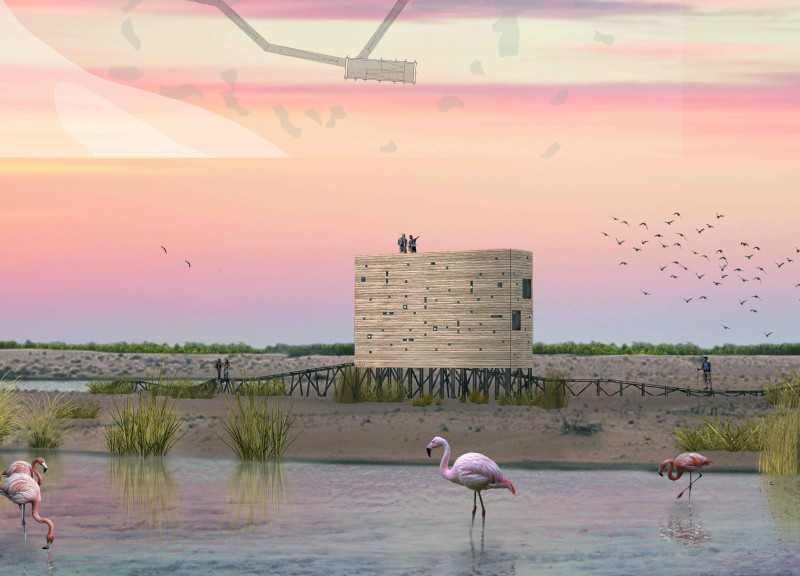5 key facts about this project
The architectural layout features multiple platforms, ensuring varied viewing angles and experiences. The structure is constructed from locally sourced materials, primarily wood and steel, reflecting a commitment to sustainability and ecological sensitivity. The wooden elements offer warmth and a tactile connection to the environment, while the steel framework provides durability and structural integrity. This careful selection of materials plays a crucial role in minimizing the visual impact on the wetlands.
The building's design includes a series of perforated facades, allowing natural light to penetrate the interior and offering glimpses of the surroundings. This design choice enhances the visitor experience by framing specific views of wildlife while allowing for passive environmental monitoring. The interior layout incorporates ramps and accessible pathways, ensuring inclusivity for all visitors.
Unique Design Approach
What sets the "Black Box" apart from other observation structures is its dynamic interaction with the surrounding ecosystem. The design emphasizes an immersive visitor experience through a thoughtfully configured spatial arrangement. The various observation levels, equipped with carefully positioned openings and periscopes, facilitate multi-sensory engagement with the environment.
The upward elevation of the structure encourages unobstructed sightlines over the wetlands, promoting bird-watching and nature observation without disturbing local wildlife. Furthermore, the use of environmentally responsive design principles allows the project to adapt over time, reinforcing its role within the ecological framework of the wetland reserve.
Architectural Strategies and Outcomes
The "Black Box" employs architectural strategies that prioritize sustainability and functionality. The integration of ramps for accessibility and the choice of lightweight materials ensure that the structure minimally disrupts the delicate ecosystem. The design promotes an ecological dialogue, inviting visitors to explore the interrelationship between built and natural environments.
Visitors are encouraged to engage with wildlife through the innovative design features of the structure, fostering a deeper understanding of ecological preservation. The architectural planning allows for seamless movement throughout the space, and the aesthetic qualities derived from the material selection enable a visual cohesion with the surrounding landscape.
To gain deeper insights into the "Black Box," we invite you to explore the architectural plans, architectural sections, and architectural designs that outline the thoughtful ideas and details embedded within this project.


























